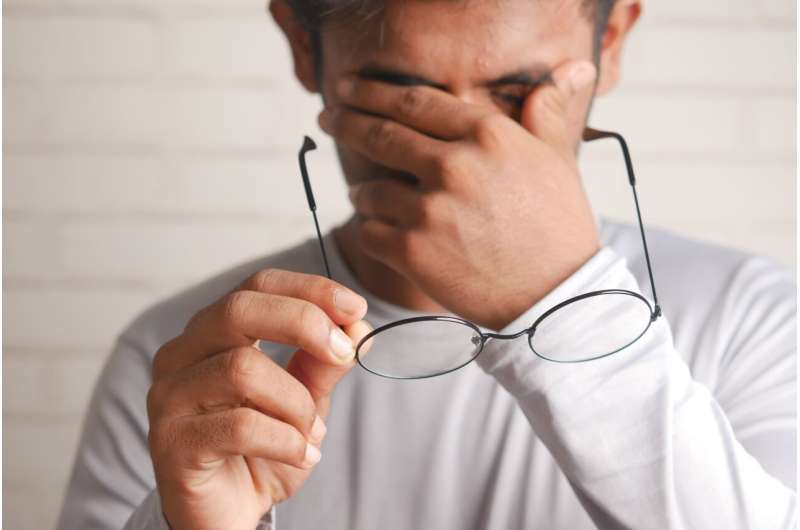
People who are very sleepy during the day, despite a good night’s rest, may have a sleep disorder called idiopathic hypersomnia. New research has found this neurologic disorder may not be as rare as once thought. The study is published in the December 13, 2023, online issue of Neurology.
Symptoms of idiopathic hypersomnia include not only being very sleepy during the day, but also sleeping excessive amounts of time, having difficulty waking up, and waking up disoriented. This makes it difficult to complete day-to-day activities, decreasing a person’s quality of life. It differs from narcolepsy. People with narcolepsy are also sleepy during the day but usually do not sleep excessive amounts of time and may wake up feeling refreshed after naps.
“It has been difficult to determine the prevalence of idiopathic hypersomnia because expensive and time-consuming sleep testing is required to make a diagnosis,” said study author David T. Plante, MD, Ph.D., of the University of Wisconsin–Madison.
“We examined data from a large sleep study and found that this condition is much more common than previous estimates, and as prevalent as some other common neurologic and psychiatric conditions such as epilepsy, bipolar disorder and schizophrenia.”
For the study, researchers examined sleep data for 792 people with an average age of 59. All participants completed an overnight sleep study and a daytime nap study, which measures how fast someone falls asleep over a course of four or five naps. Participants were also surveyed about daytime sleepiness, fatigue, the amount of time napping, and how many hours of sleep they get on a worknight and a nonwork night.
Researchers determined that 12 people had probable cases of idiopathic hypersomnia, for a prevalence of 1.5%. People with the disorder had more severe sleepiness, despite similar or longer sleep times.
On a survey of sleepiness with a score range of zero to 24 that asks questions like how likely a person is to nod off while sitting, talking and stopped in a car, people with idiopathic hypersomnia had an average score of 14 while those without it had an average score of nine. A score of higher than 10 is of concern.
During the sleep studies, people with idiopathic hypersomnia took an average of four minutes to fall asleep at night and six minutes during naps, compared to an average of 13 minutes at night and 12 minutes during naps for people without the disorder.
Researchers also looked at daytime sleepiness in people with idiopathic hypersomnia over an average of 12 years. They found for the 10 people for whom data were available, excessive daytime sleepiness was often chronic. However, sleepiness went away for four people, or 40% of those studied. Plante noted that not only does that provide hope for people with the disorder, it also underscores the need to further study what leads to remission.
“Our results demonstrate that idiopathic hypersomnia is relatively common, more prevalent than generally assumed, so there is likely a sizable difference between the number of people with this disorder and those who seek treatment,” said Plante. “Further efforts to identify, diagnose and treat those impaired by idiopathic hypersomnia are needed. Additional research may also clarify the causes of idiopathic hypersomnia and lead to new treatments.”
A limitation of the study was that study participants were employed, so prevalence could be different in other populations, and may be even higher in the unemployed since people with idiopathic hypersomnia have higher rates of job loss and disability.
More information:
Neurology (2023).
Journal information:
Neurology
Source: Read Full Article
